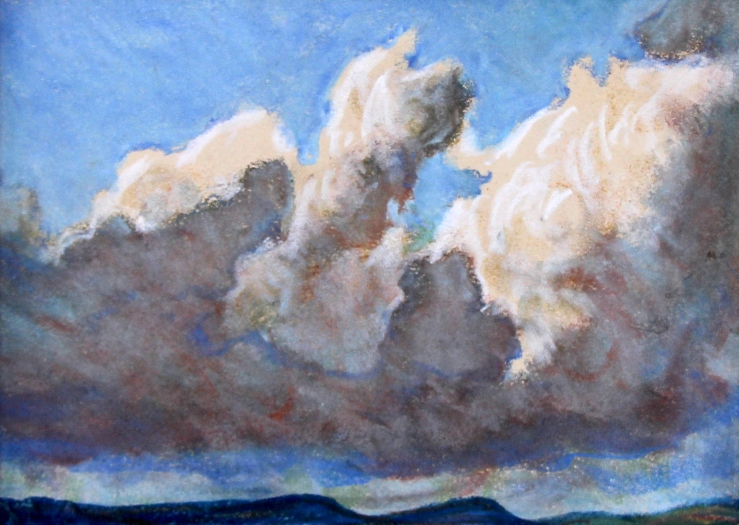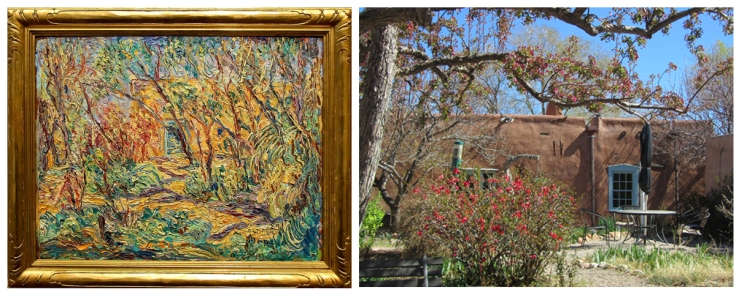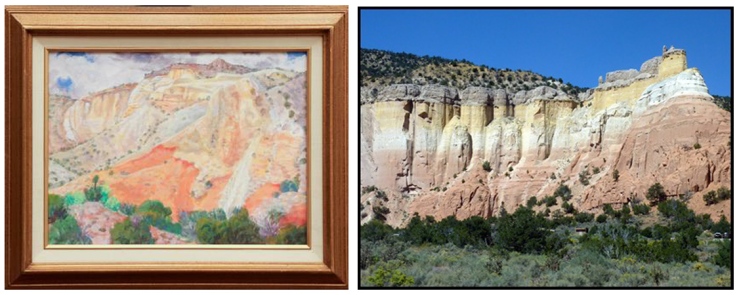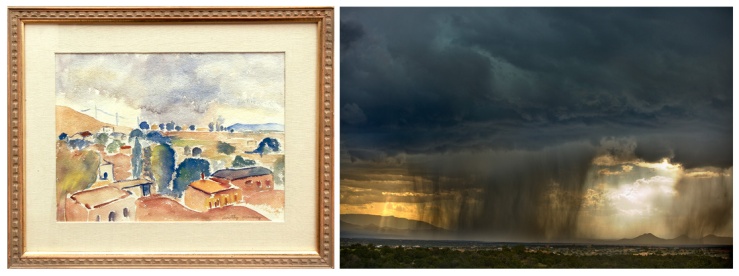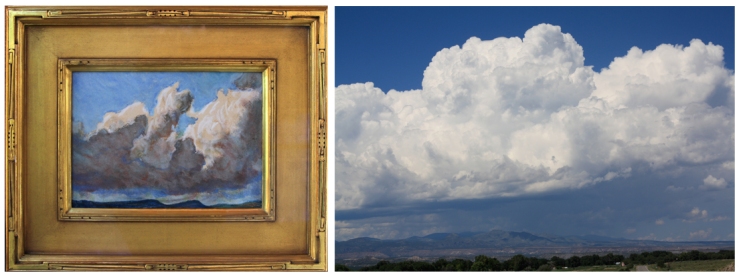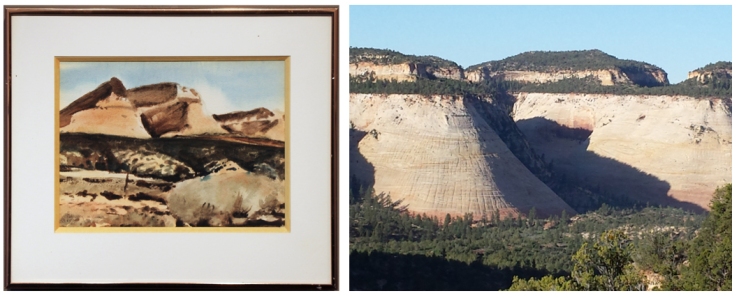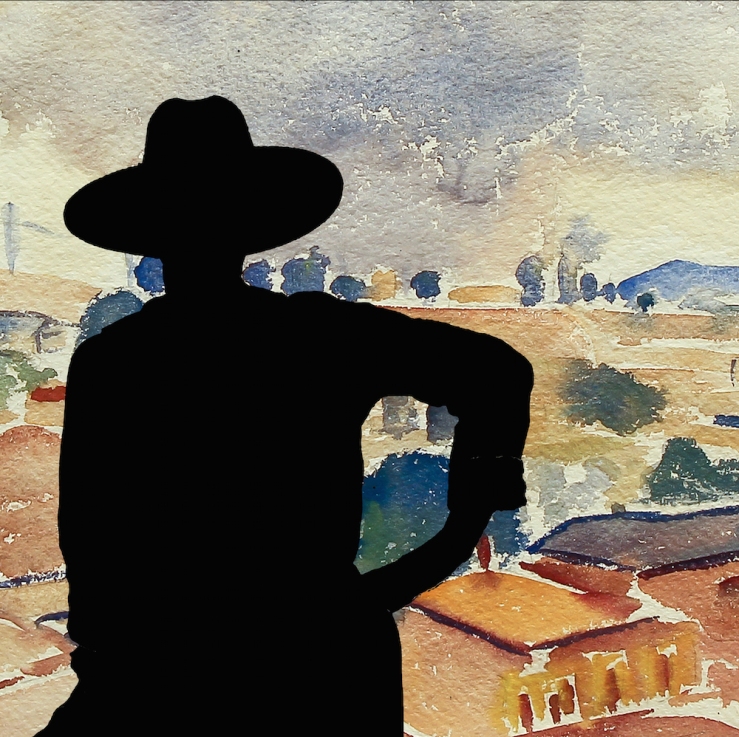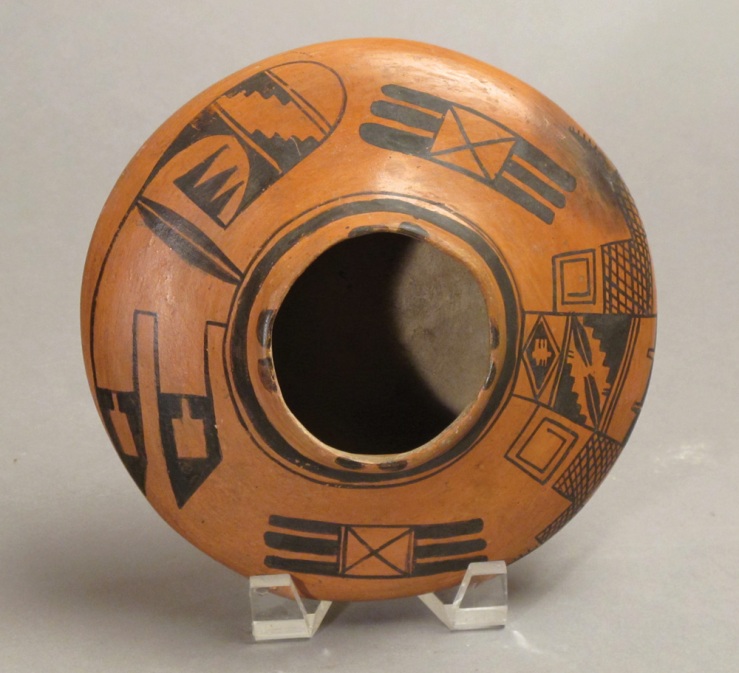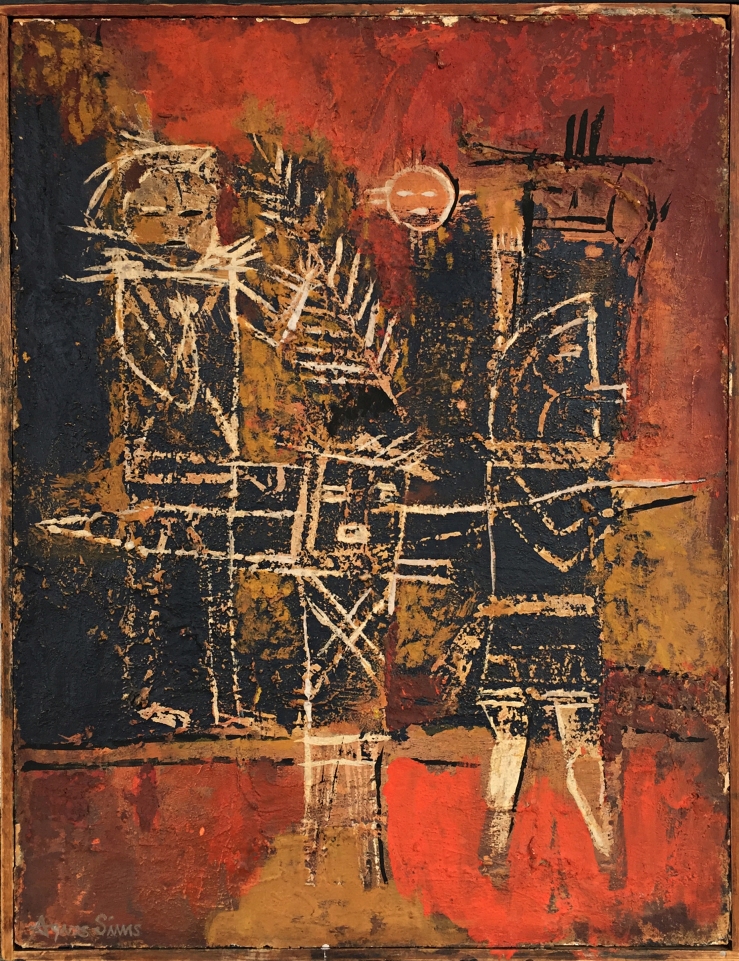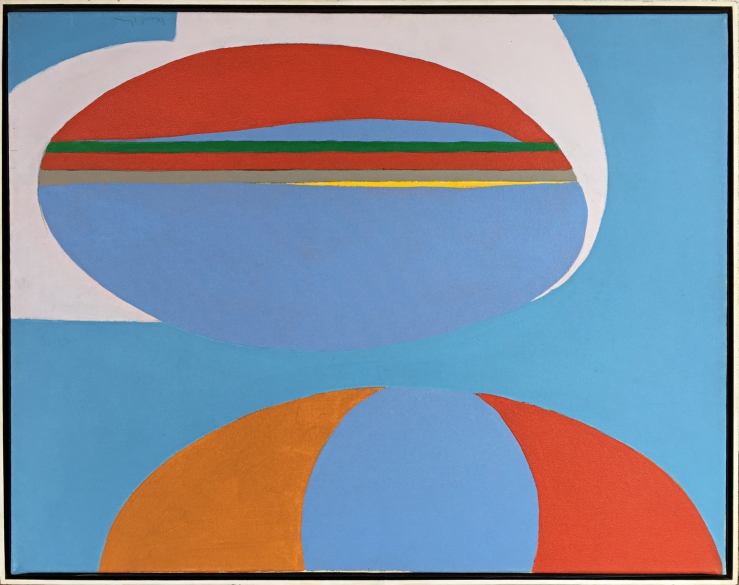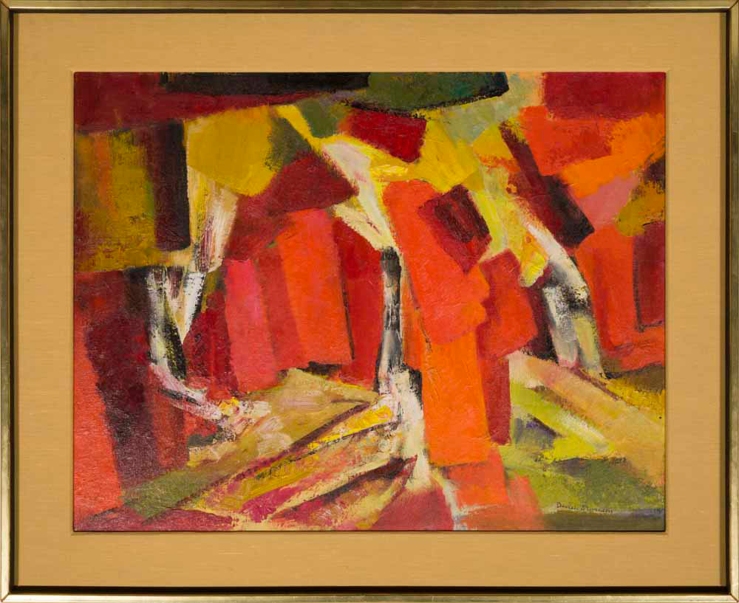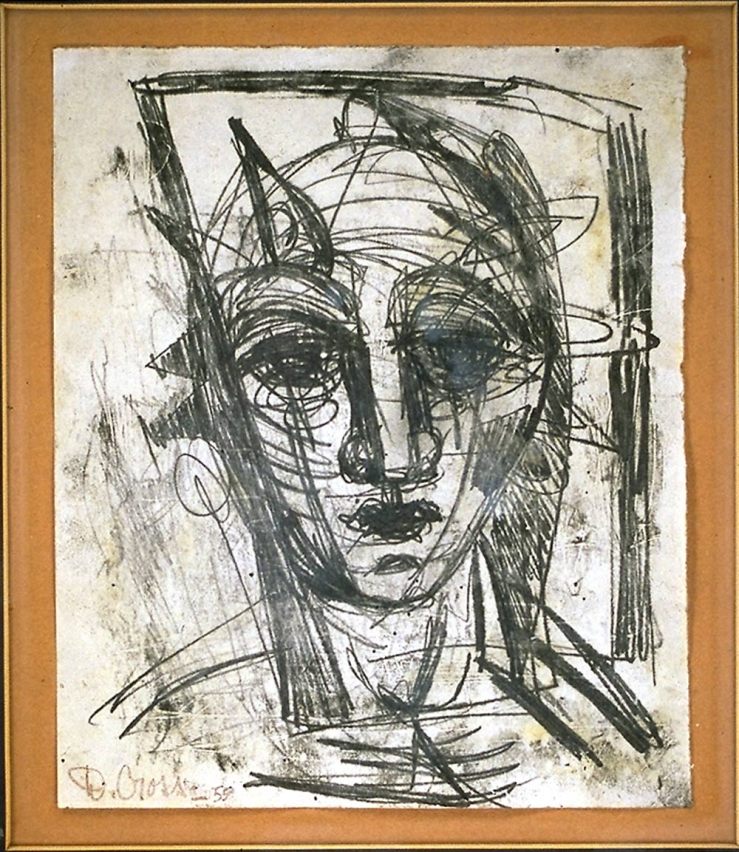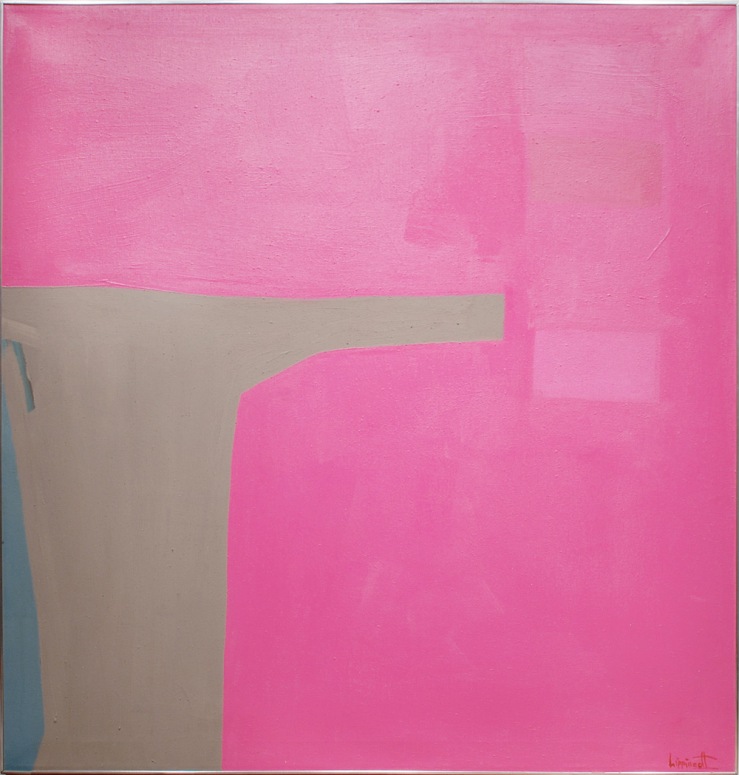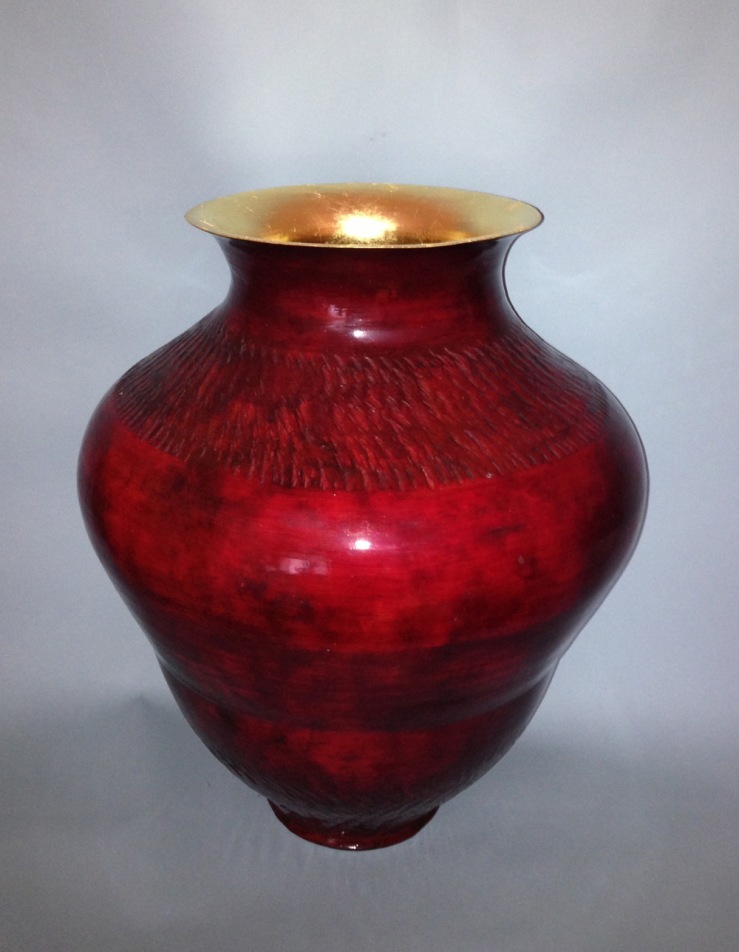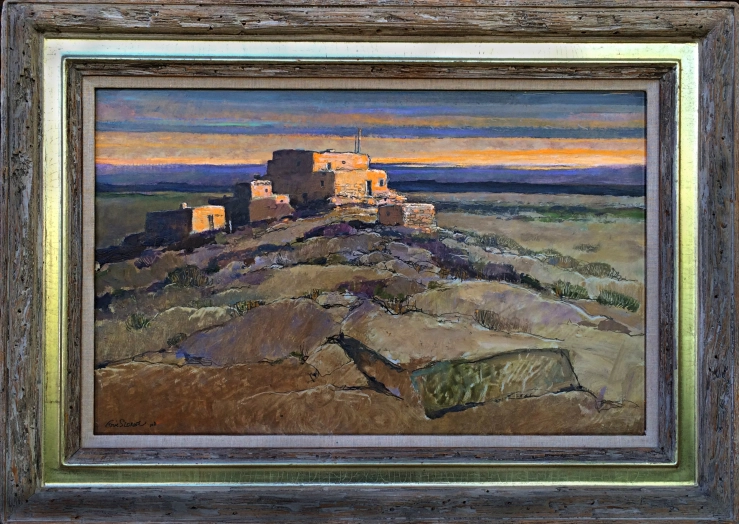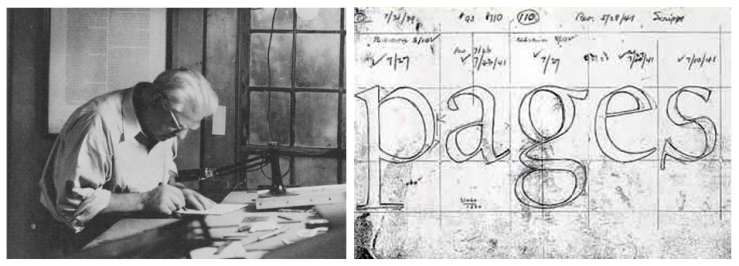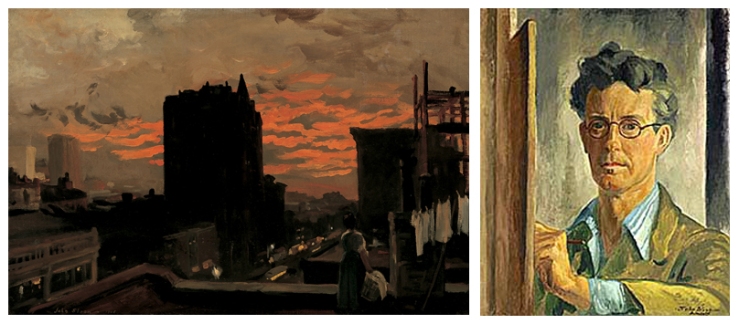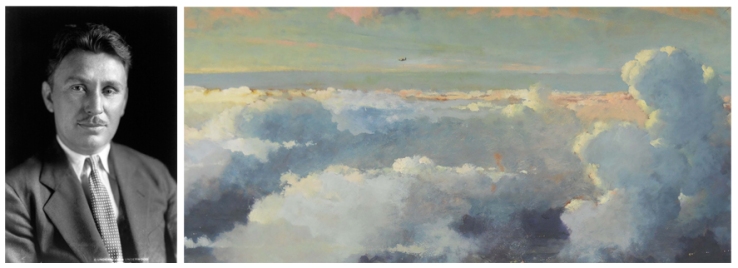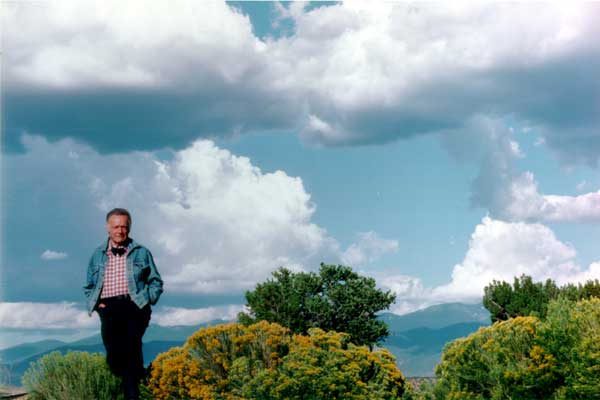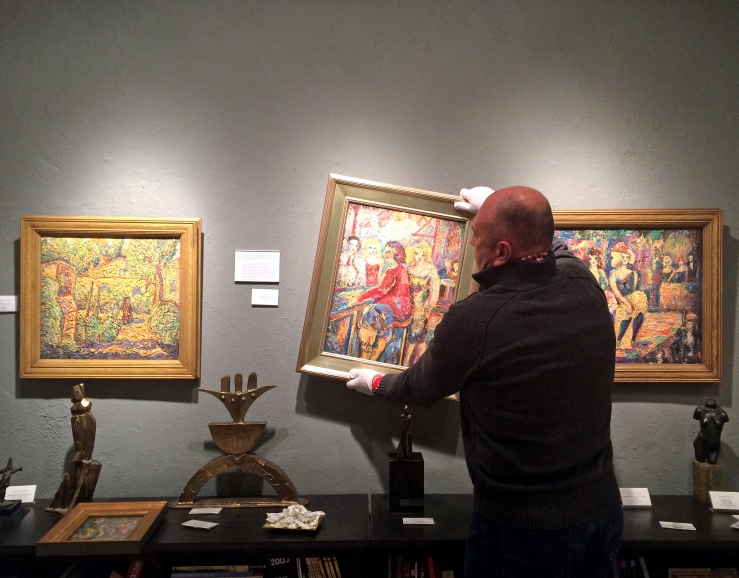
“How did you get this many Morangs together?”
That’s the most frequent question we’ve received from Alfred Morang fans who’ve come to our show in the past few weeks. It’s common to see one or two works by the Santa Fe master in a gallery’s collection, but it’s quite a special experience to view 37 pieces in one place.
Truth is, we called our exhibition MORANG AND FRIENDS because we thought Morang’s contemporaries would dominate the show. It was only through a huge response from the Santa Fe community—private collectors, dealers, galleries—that it all came together. We’re so grateful to everyone involved for working with us, with special thanks to El Farol, Silver Sun Gallery, the Matt Kuhn Collection and our co-curator Paul Parker.
And what a show it was! As we take the paintings down today, we’re feeling quasi-nostalgic for the Santa Fe golden age that Morang’s diverse body of work evokes. For the last 21 days, we’ve been transported to a City Different full of wild saloons and drunken shootouts, free-flowing absinthe and spooky ghosts.
For our final blog post on the show, we thought it would be fitting to spotlight the colorful clique of bohemian artists who surrounded Morang during his time here in the 1930’s- 50’s. Morang was a brilliant art teacher who passed his knowledge to the next generation of Santa Fe artists. They ensured that his influence still ripples through the New Mexico art world today…
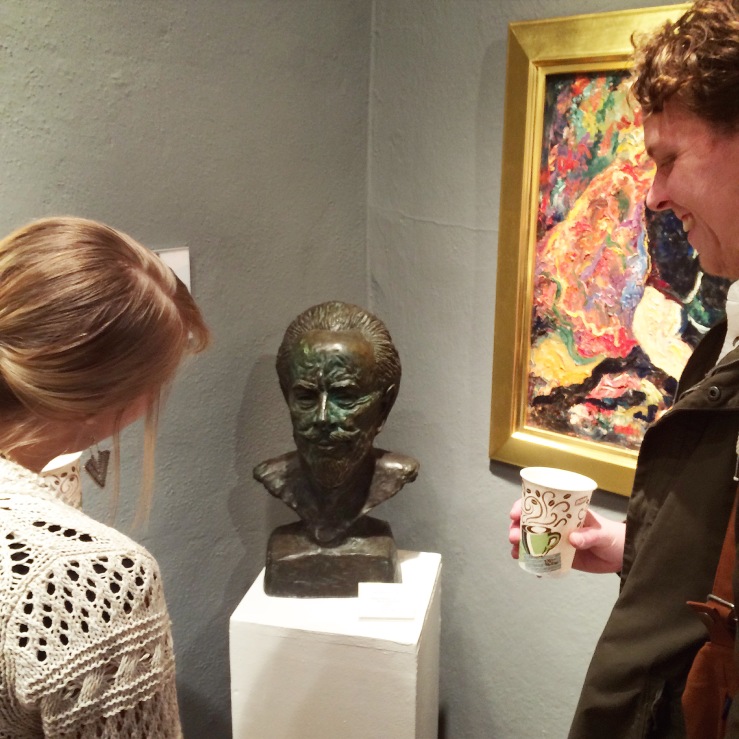
TOMMY MACAIONE
This portrait of Alfred Morang appeared in the exhibition courtesy of the Matt Kuhn Collection. It was made by another colorful Santa Fe character, Thomas S. Macaione (1907-1992), also known as ‘El Diferente’. Macaione’s mature painting style was heavily influenced by Morang’s teachings, and they also had similar lifestyles. They lived as true bohemians, devoted to art above all else.
“[Macaione’s] passion for plein-air painting was not entirely appreciated at first in the town’s lingering Wild West atmosphere,” wrote the Santa Fe New Mexican in 2013. “Once, when painting a garden on Acequia Madre, he was scared off by the property owner, who fired a pistol in the air in his flowers’ defense.” A photograph of this bust appears on the final page of Walt Wiggins’ essential biography of Alfred Morang, A Neglected Master, along with a quote from Margaret Turner Williams:
[Morang] died as he lived: alone. Yet he was never lonely, for he was a creator, and creators learn early in life to bridge the gap between the pain of loneliness and the peace of solitude.
With no material wealth, he was one of the richest human beings who ever lived. Everyone who knew him, and some who didn’t, feel a sense of loss at his passing.
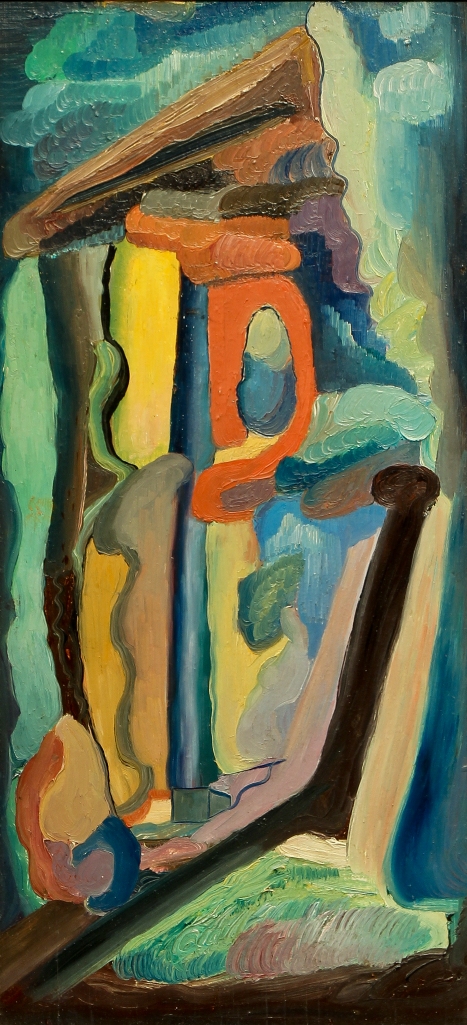
TRANSCENDENTAL PAINTING GROUP
A small group of New Mexico artists including Raymond Jonson, Emil Bisttram, and William Lumpkins formed the Transcendental Painting Group (TPG) in 1938. The collective was inspired by early abstract artists like Wassily Kandinsky and Piet Mondrian, as well as Theosophy, Zen Buddhism and Dynamic Symmetry. Their goal was to validate and promote abstract art by transcending their senses to explore spiritual realms. The group organized lectures, published articles and mounted exhibitions in New Mexico, San Francisco and New York. Alfred Morang was not a founding member of the group, but he acted as their press secretary for a number of years. An excerpt from Morang’s November 4, 1938 article “Transcendental Foundation Plans Extensive Activities” in the Santa Fe New Mexican:
It is deeply significant that in this time of readjustment in almost every stratum of life, a few people are intent upon an important branch of cultural development. In Santa Fe the founding of the ‘American Foundation for Transcendental Painting, Inc.’ marks the start of a new phase of American art. […] Briefly, transcendental painting is no school or ism. It is a phase of art that, out of many more or less isolated experiments, has evolved toward non-objective painting, the type of painting that is not dependent upon an object, in nature, but is deeply concerned with forms conceived by the imagination.
The TPG only lasted a few years, disbanding in 1942 because of World War II. However, the collective’s influence endures in the Southwest and beyond. Some consider the group an heir to Russian Constructivism and the Bauhaus. Morang completed a number of abstract works inspired by the group’s philosophy, including the oil painting above titled “Into Tomorrow“. Click here to see more.
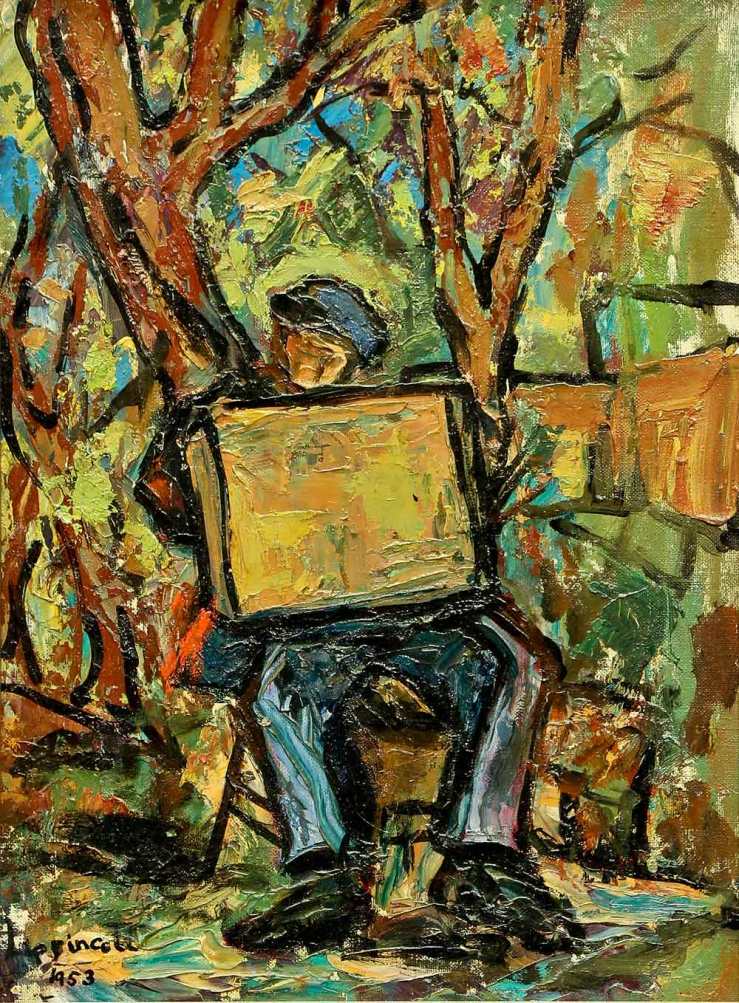
JANET LIPPINCOTT
“Alfred Morang was one of the few people who encouraged me in my abstract expressionism,” said Janet Lippincott (1918-2007), one of Morang’s best-known pupils. Lippincott came to New Mexico in 1946 and studied at the Emil Bisttram School for Transcendentalism in Taos. Bisttram was a founding member of the Transcendental Painting Group (1938-1942), a collective of abstract painters with a spiritual, non-political approach to art, for which Morang served as press secretary. Santa Fean Magazine interviewed Lippincott for an article on Morang in their April 1978 issue:
He was an excellent painter and inspiring teacher “and he had a good mind,” Janet Lippincott says. She studied landscape painting with him for three months one summer, and she remembers that “he had something about him that could draw out the best you had in you.”
This portrait of Alfred Morang isn’t the only artwork by Lippincott that appeared in the show. Click here to see more.
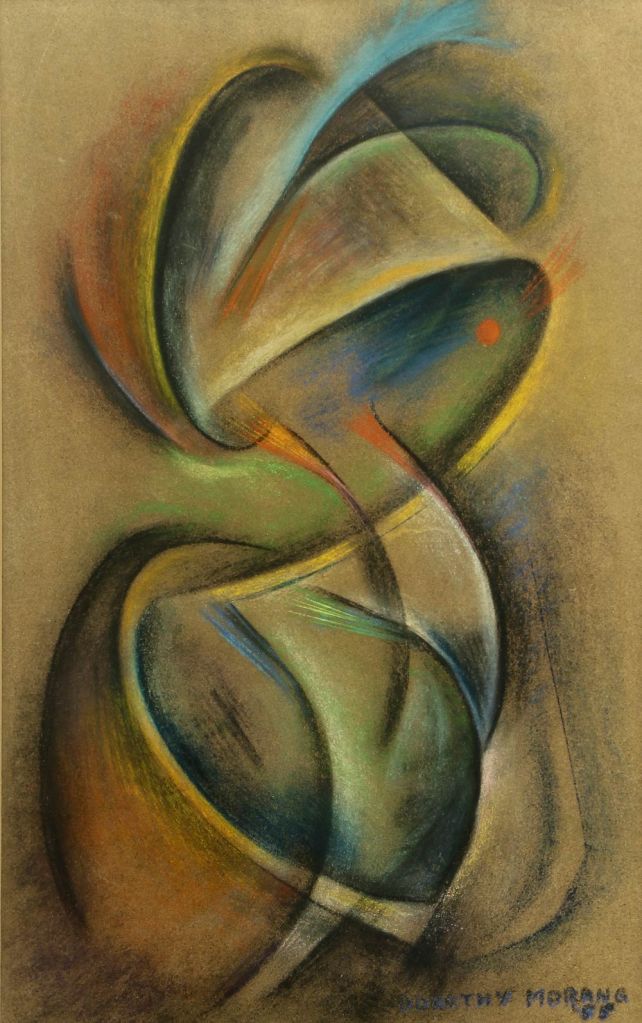
DOROTHY MORANG
Dorothy Morang (1906-1994) was born in Richmond, Maine. She met Alfred in 1925, and they were married in 1930. They lived in Portland, Maine for a number of years, and moved to Santa Fe in 1937 to alleviate the symptoms of Alfred’s tuberculosis.
Dorothy and Alfred divorced in 1950, but she looked out for him for the rest of his life and arranged the transfer of his estate to a Morang relative after his death in 1958. Dorothy was an impressive painter in her own right—here she draws inspiration from the Transcendental Painting Group, for which her husband acted as press secretary. She worked for many years at the New Mexico Museum of Fine Arts, primarily as a curator. An excerpt from an oral history interview with Dorothy Morang by Sylvia Loomis in the Archives of American Art:
SYLVIA LOOMIS: Were you painting after you got to
Santa Fe?
DOROTHY MORANG: Yes, I started even more seriously. I’d been working quite steadily in Portland, Maine – Alfred and I lived there for about seven years before we came here – and I went on and worked very seriously with some criticism from Alfred and from Raymond Jonson, who was living in Santa Fe then. […] Alfred had also taken up writing, and he was very active, as you know, on radio, too, interviewing artists on the radio. He had an interview program for several years. He was extremely active.
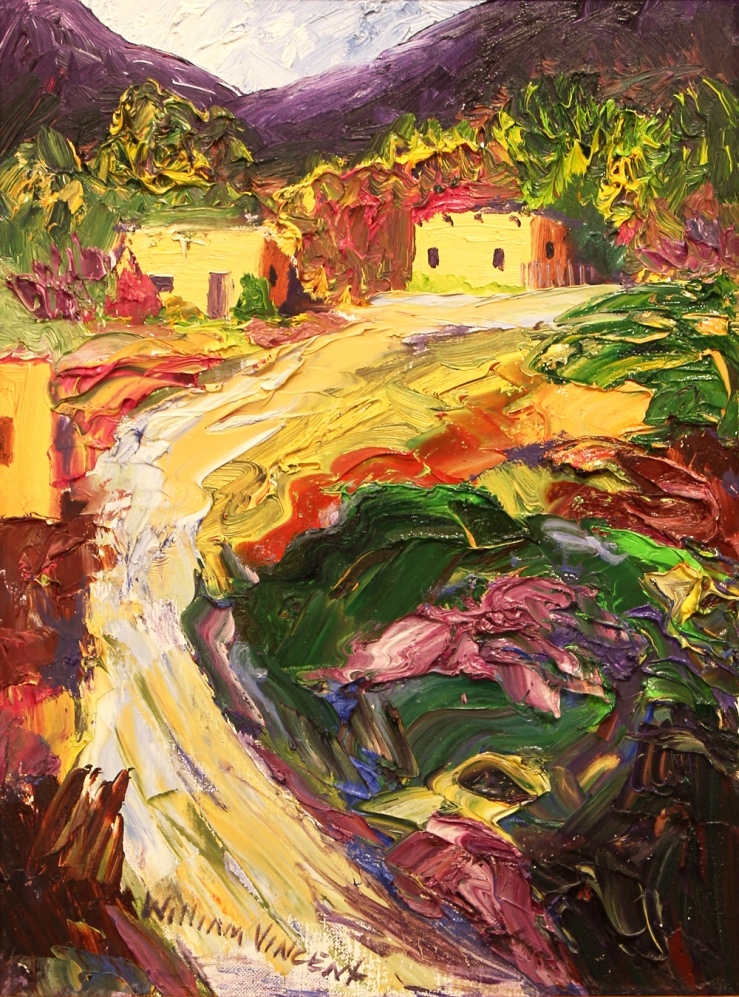
WILLIAM VINCENT KIRKPATRICK
“[Alfred Morang] taught half of us how to paint and the other half how to see,” remarked an unknown Santa Fe artists after Morang’s tragic death in 1958. The Morang School of Fine Art was instrumental in the development of a new generation of Santa Fe artists. At the time of Morang’s death, William Vincent Kirkpatrick (1939-2004), one of his star pupils, was studying at the Taos School of Art. He returned to Santa Fe, rebuilt his master’s studio and worked on a series of canvases inspired by Morang’s vivid hues and painterly textures. Vincent Kirkpatrick also did a painting on the wall at El Farol near Morang’s series of murals, ensuring that their work would hang side-by-side for years to come!
Learn more about Alfred Morang and his contemporaries on the Matthews Gallery website, and make sure to connect with us on Facebook, Twitter and Instagram for daily gallery news. Also keep your eye out for our 2015 exhibition schedule, which will explore other corners of the Santa Fe art colony. Coming very soon!
